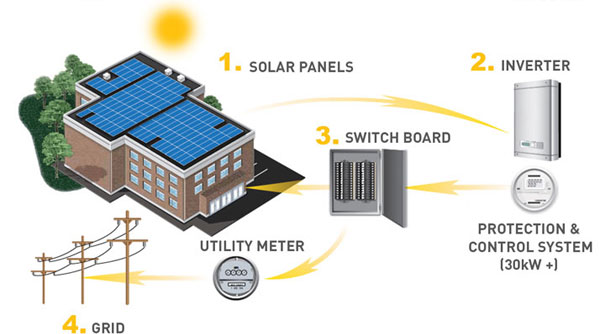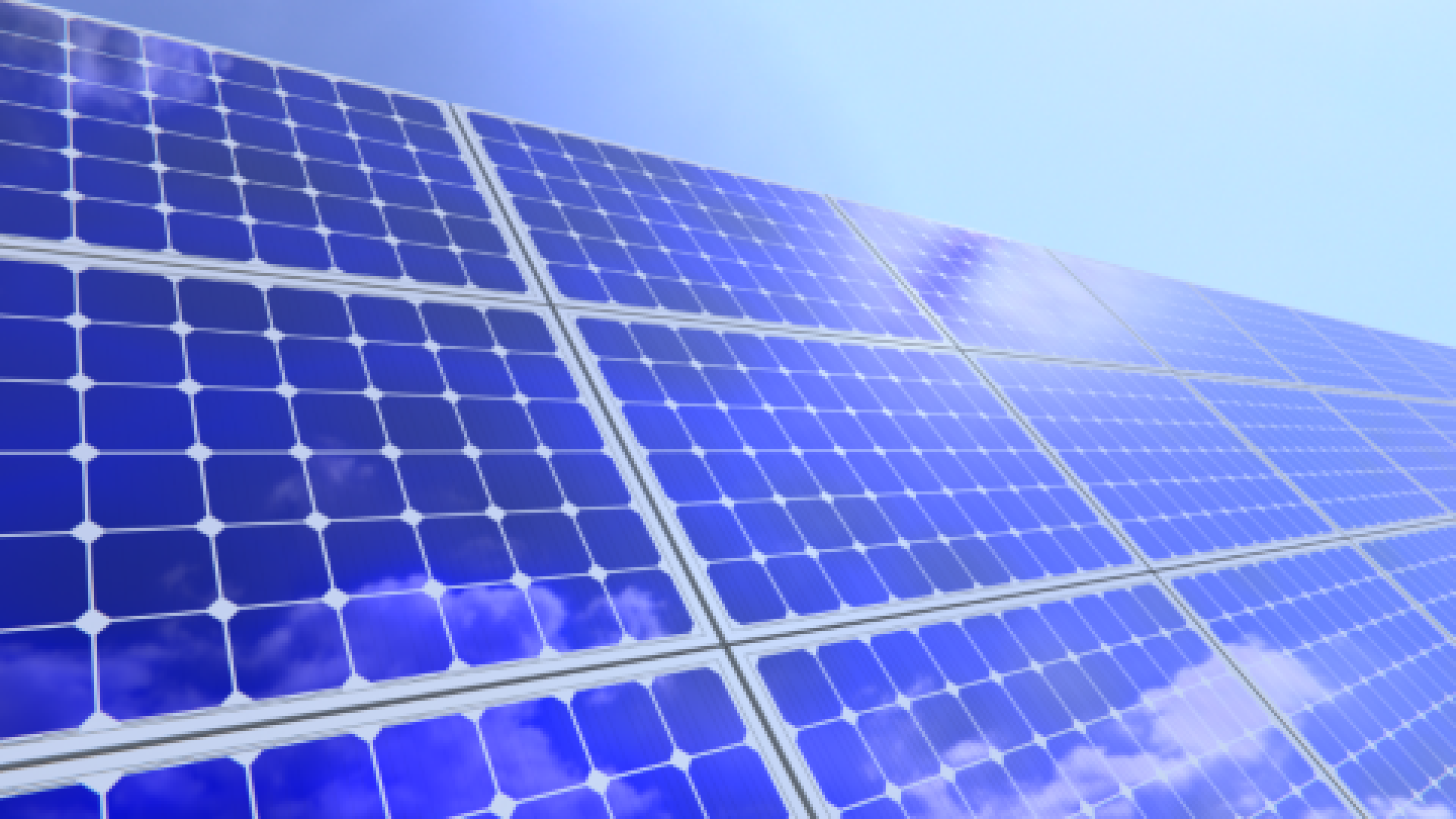How a HOLASOL Solar System Works
Installing a commercial solar system in a business works in conjunction with your existing grid electricity supply. The electricity generated by your commercial solar power system directly offsets the amount of electricity you need to purchase from your electricity retailer, thus reducing your electricity bill.

1. Solar Panels
Solar panels, or solar modules as they are sometimes called, are typically installed on the roof. These solar panels are made up of photovoltaic (PV) cells, which convert sunlight into direct current (DC) power.
2. Inverter
The DC power from the solar panels is sent to an inverter, where it is converted into alternating current (AC) power, or standard electrical current used in your company.
3. Switch Panel
AC power travels from the inverter to the electrical panel, often called a switch panel. This power is now ready to use in your company.
4. Utility Grid
Your company remains connected to the utility grid to supply you with electricity when you need more power than your solar power system has produced, such as on overcast days or at night. When your solar system is producing electricity this is consumed on the premises and any shortfall is seamlessly provided by the grid. Conversely, any excess is sent out to the grid (depending on where you and your retailer are located, you may receive a payment for this). According with Safety Standards, if the grid is down, for example during a blackout, the inverter will shut down and the solar system will not produce any energy. For systems with a battery backup, the inverter regulates the charge of batteries. The electricity stored in the batteries can be used at night or during blackouts. A new “Bi-Directional” electricity meter will be installed as part of the system and will keep track of this.

